Estimated reading time: 13 minutes
Have you heard of a fruit tree guild? We often recommend them to our Grow Great Fruit members because they’re a clever design feature that supports the health of your fruit trees while making your garden more interesting and beautiful.
They’re also a great way to attract bees and other insects to your garden.
What is a fruit tree guild?
Like many things in gardening, guilds are an ancient technique that has been borrowed and made new again. For example, the concept is talked about often in permaculture.
Guilds aim to get the most productivity from the space beneath your fruit trees. At the same time, the plants are chosen to bring benefits to the trees or the soil.
Guilds usually consist of multiple elements:
- one or more fruit trees
- possibly smaller trees or shrubs
- insect attractors
- nutrient accumulators
- mulch makers
- nitrogen fixers
- weed suppressors
The garden beds at Perth’s Urban Orchard in Perth contain a lot of the elements. We’re not sure if they are specifically modeled on guilds but many beds meet the criteria.
We were very impressed with this beautiful urban orchard at Perth Cultural Centre and have also written about it here and here.
What plants are good for fruit tree guilds?
One of the things we noticed about this garden was the focus on edible and medicinal plants. Many of the plants came from all around the world, with a few Australian natives mixed in.
Perth’s climate is quite Mediterranean with hot, dry summers and cool, wet winters. This probably explains why the olive trees in beds 1, 3, and 7 (and their understory plants) have thrived.
For anyone trying to create guilds around their fruit trees, it can be hard to know which flowers, herbs, and veggies will grow well with fruit trees. We hope you find some inspiration here, we certainly did!
Beds 1, 3, and 7: Manzanillo olives
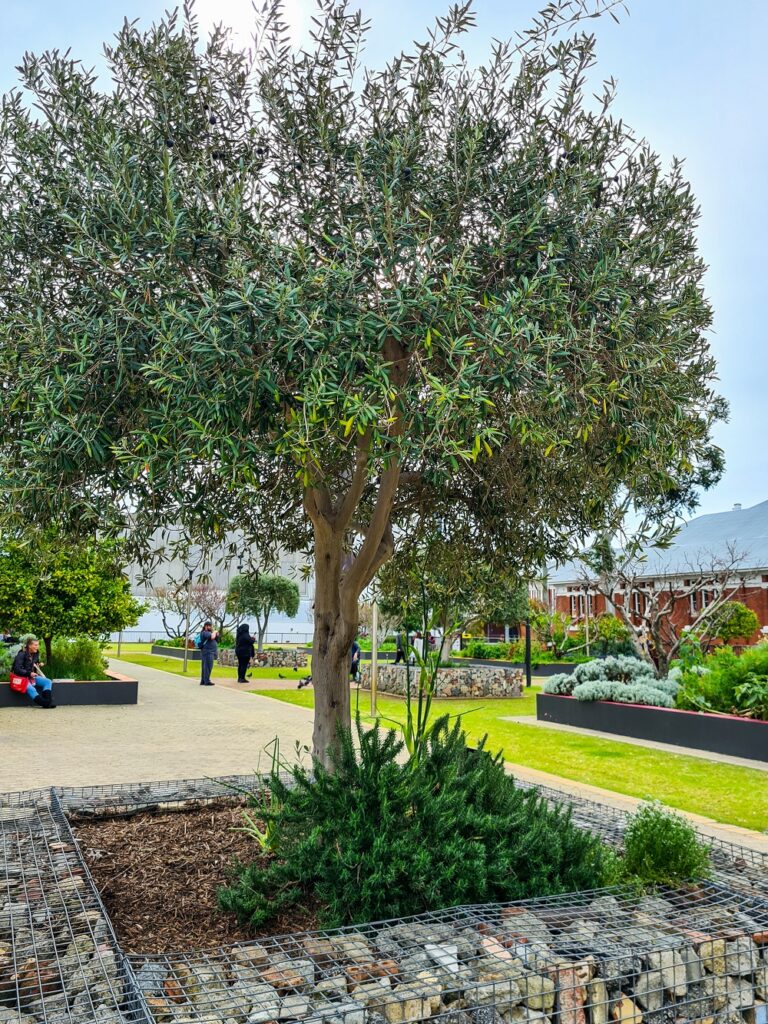
These beds planted out with black Spanish olives are some of the smallest beds in the garden. They are good examples of how even small spaces under single trees can be productive.
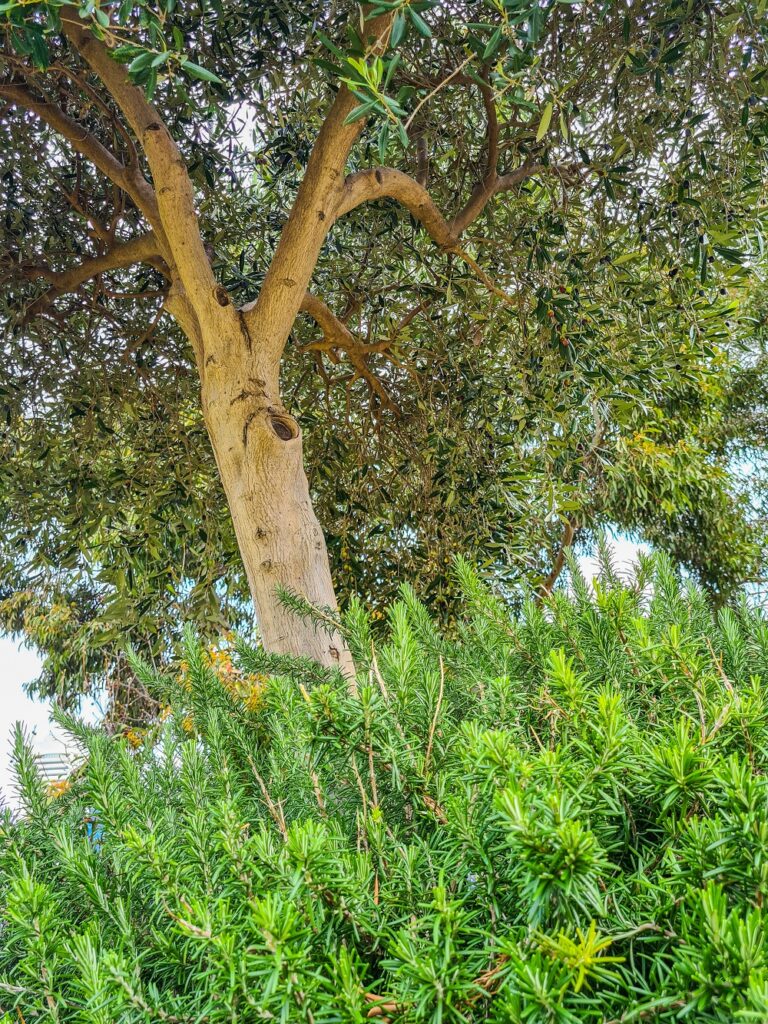
Each bed contains a mix of Mediterranean herbs – perfect to go with olives! Plants growing under the olive trees in these beds include:
- Prostrate rosemary (Rosemarinus officinalis ‘Prostratus’)
- Fennel (Foeniculum vulgare)
- Sage (Salvia officinalis)
- Genovese basil (Ocimum basilicum)
- Alyssum (Lobularia maritima)
- Oregano (Origanum vulgare)
- White salvia (Salvia nemerosa)
- Mint (Mentha)
- Chives (Allium schoenoprasum)
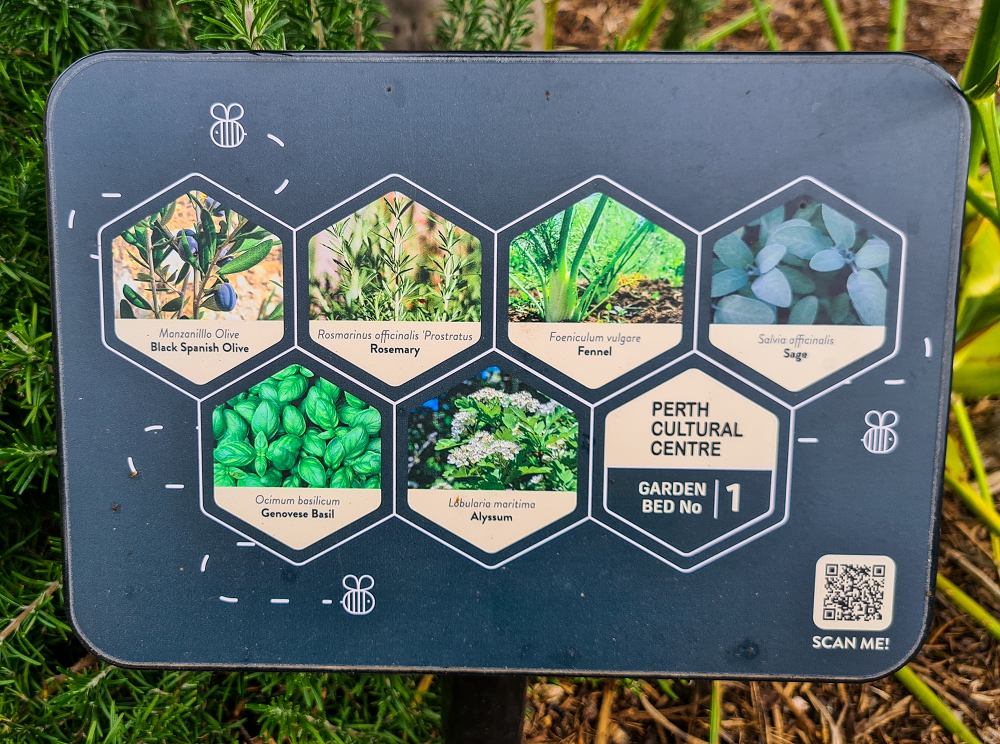
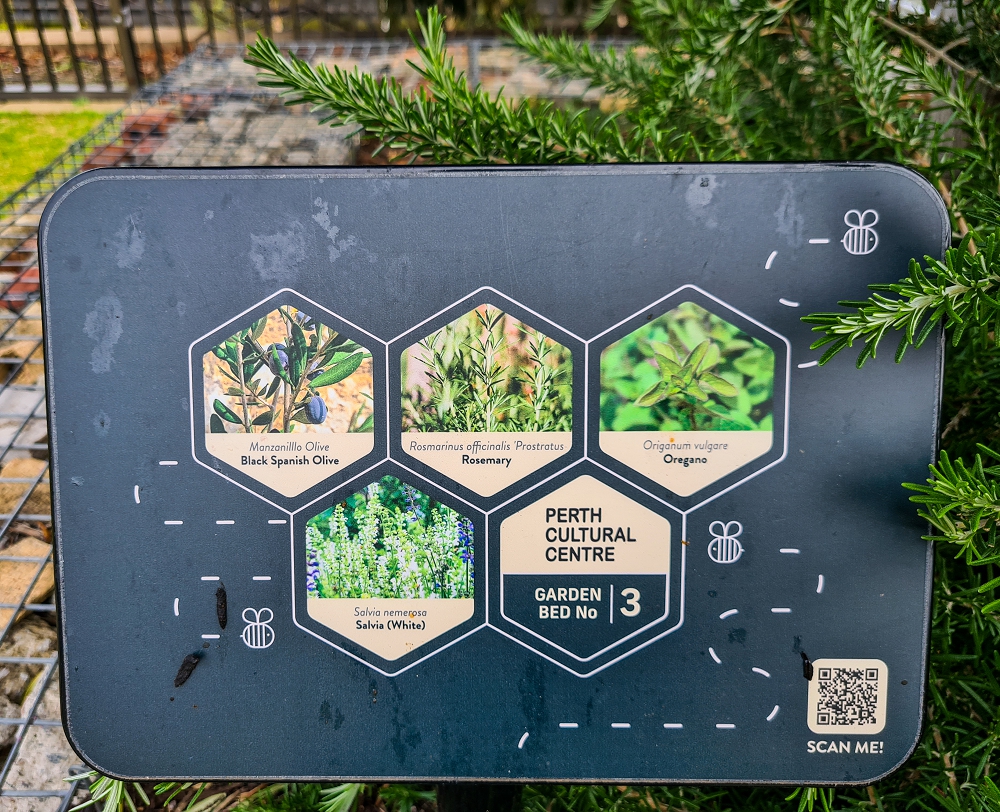

Bed 2: Naval orange, red grapefruit, and black mulberry trees
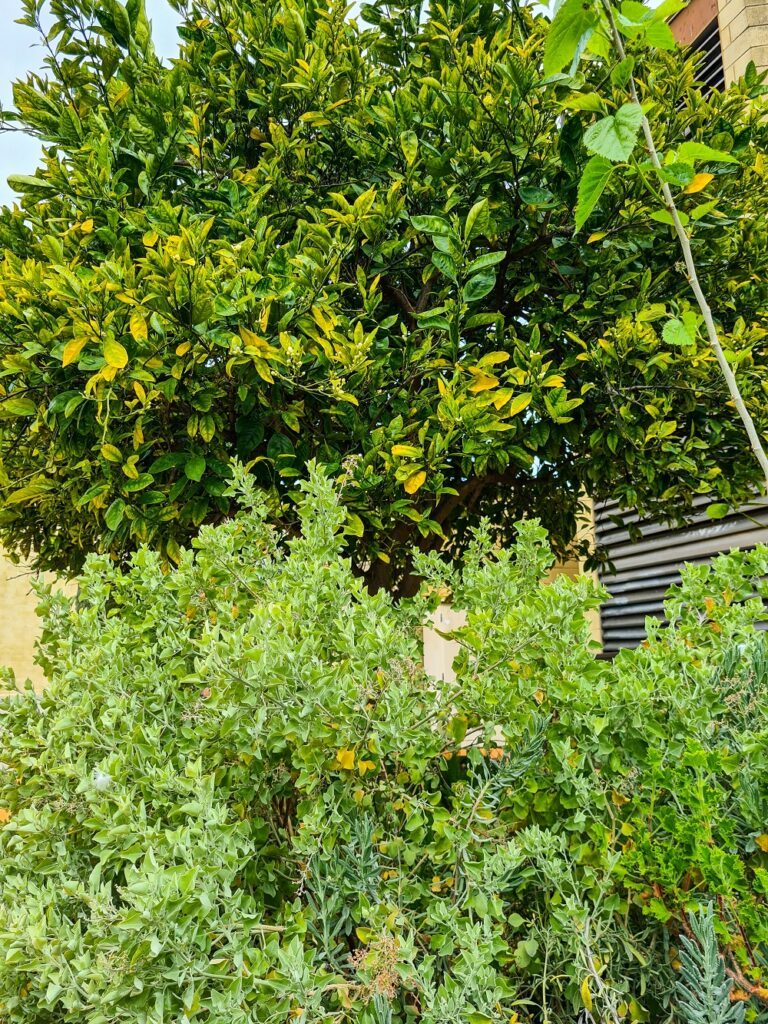
Plants growing under the trees in bed 2:
- Society garlic (Tulbaghia violacea)
- Lavender (Lavandula stoechas)
- Citronella geranium (Pelargonium ‘Citronella‘)
- Calendula (Calendula officinalis)
- Bush basil (Plectranthus graveolens)
- Salt bush (Atriplex nummularia)
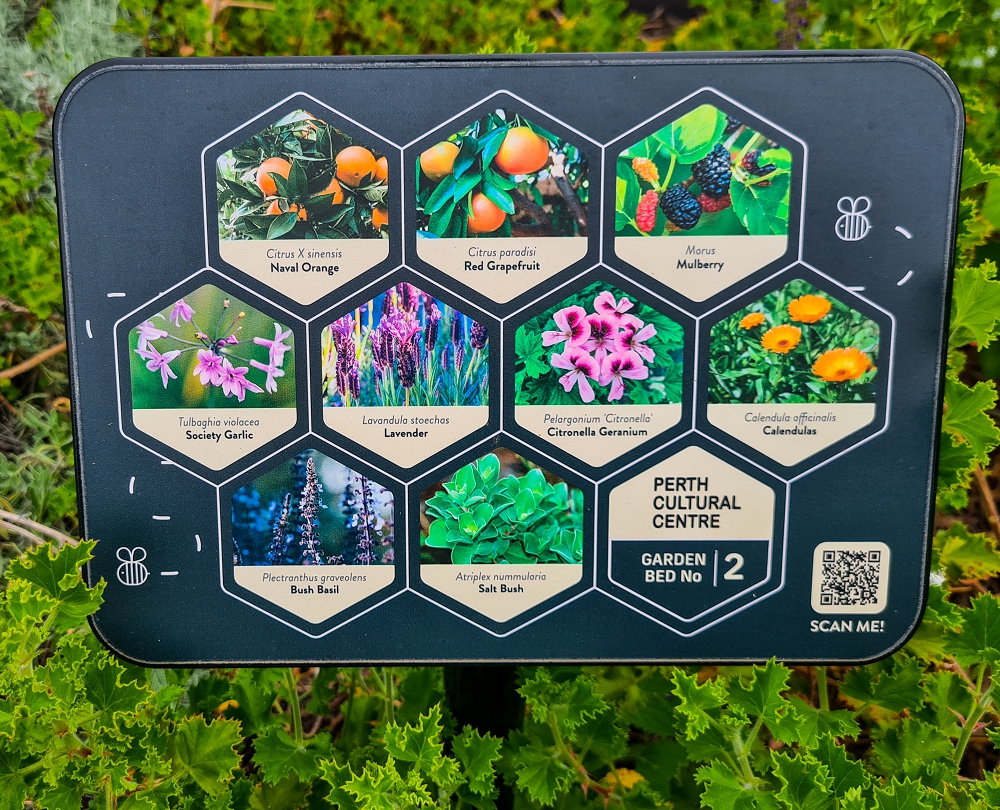
Bed 4: Almond and lime trees
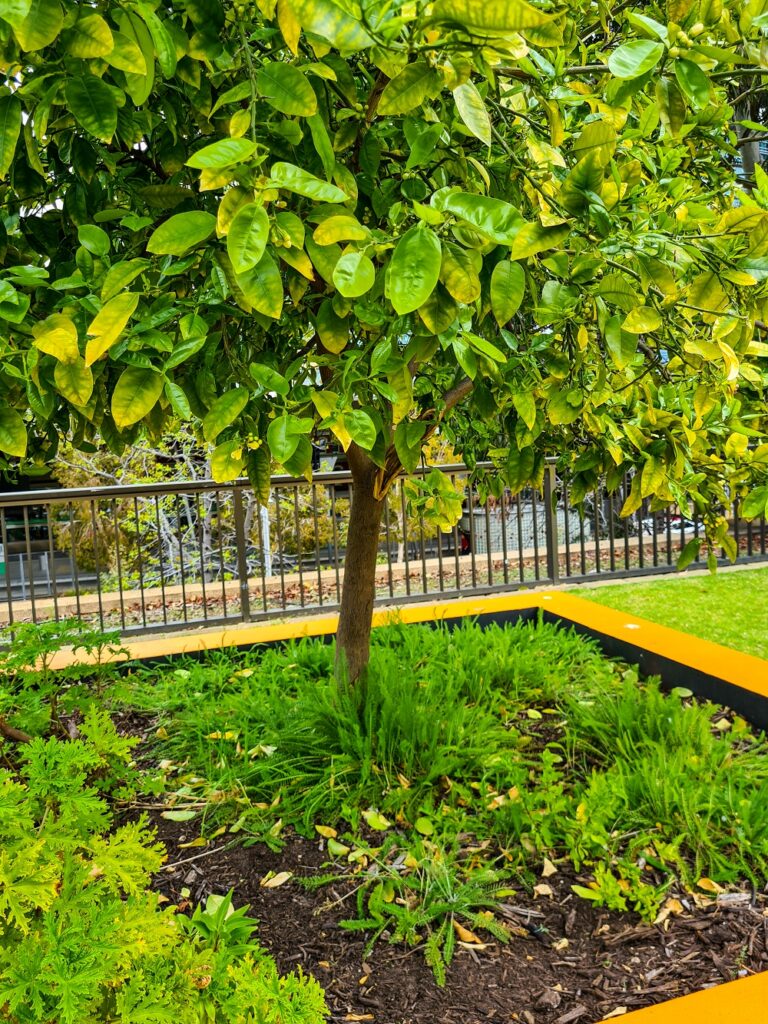
Plants growing under the trees in bed 4:
- Geraldton wax (Chamelaucium uncinatum)
- Pine scented geranium (Pelargonium denticulatum ‘Filicifolium)
- Citronella Geranium (Pelargonium citronellum)
- Curry plant (Helichrysum italicum)
- French lavender (Lavandula stoechus)
- White salvia (Salvia nemerosa)
- Salvia hotlips (Salvia microphylla)
- Purple vervain (Verbena bonariensis)
- Tansy (Tanacetum vulgare)
- Strawberry (Fragaria ananassa)
- Society garlic (Tulbaghia violacea)
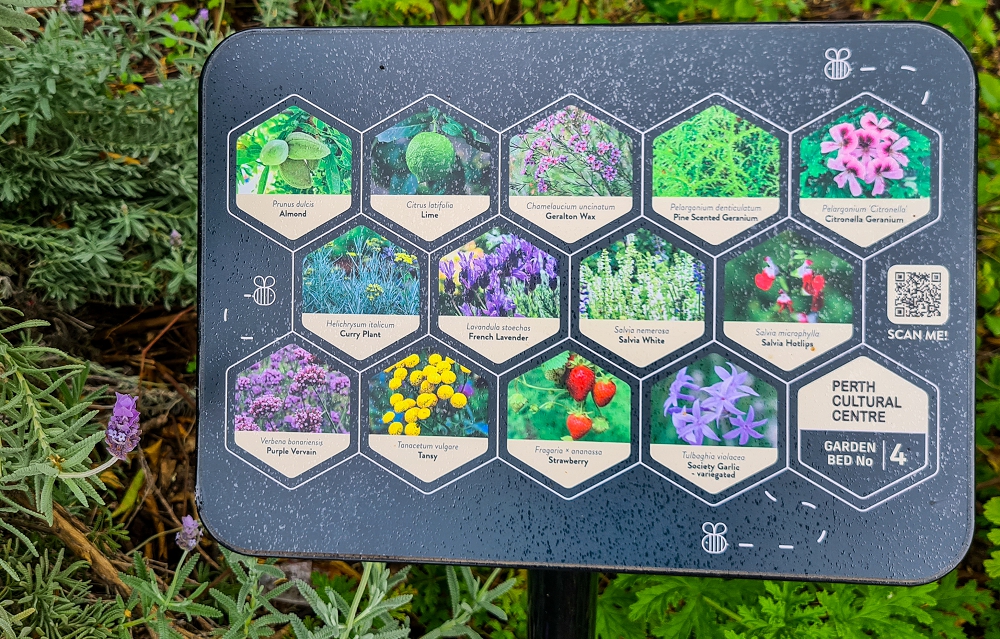
Bed 9: Nectarine (var unknown)
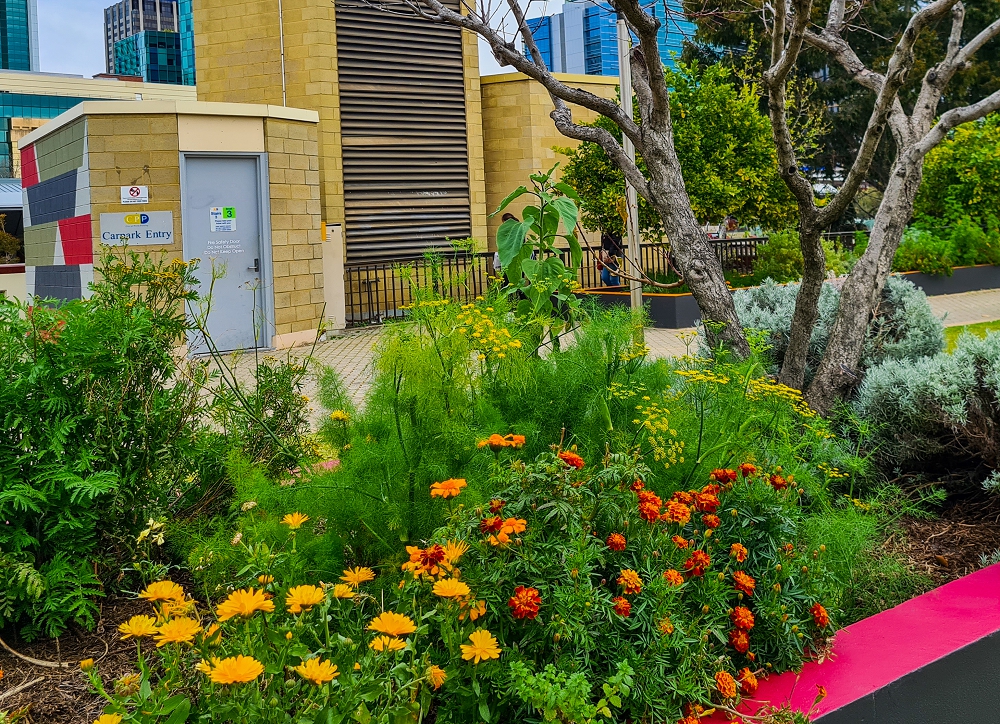
This was one of our very favourites in the garden. It was densely packed and included lots of colourful flowers, useful herbs, and vegetables.
The epitome of what a great fruit tree bed can look like.

Plants growing under the trees in bed 9:
- Sunflower (Helianthus annus)
- Echinacea (Echinacea purpurea)
- Capsicum (Capsicum abyssiunium)
- Italian parsley (Petroselinum crispum)
- Rocket (Eruca sativa)
- Bok choy (Brassica rapa)
- Fennel (Feoniculum vulgare)
- Genovese basil (Ocimum basilicum)
- Lemon basil (Ocimum basilicum citriodorum)
- Sweet alyssum (Lobularia maritima)
- Marigold (Tagetes)
- Calendula (Calendula Officinalis)
- Lemon myrtle (Backhousia citriodora)
- Mountain pepperberry (Tasmania lanceolata)
- Davidson’s Plum (Davidsonia pruriens)
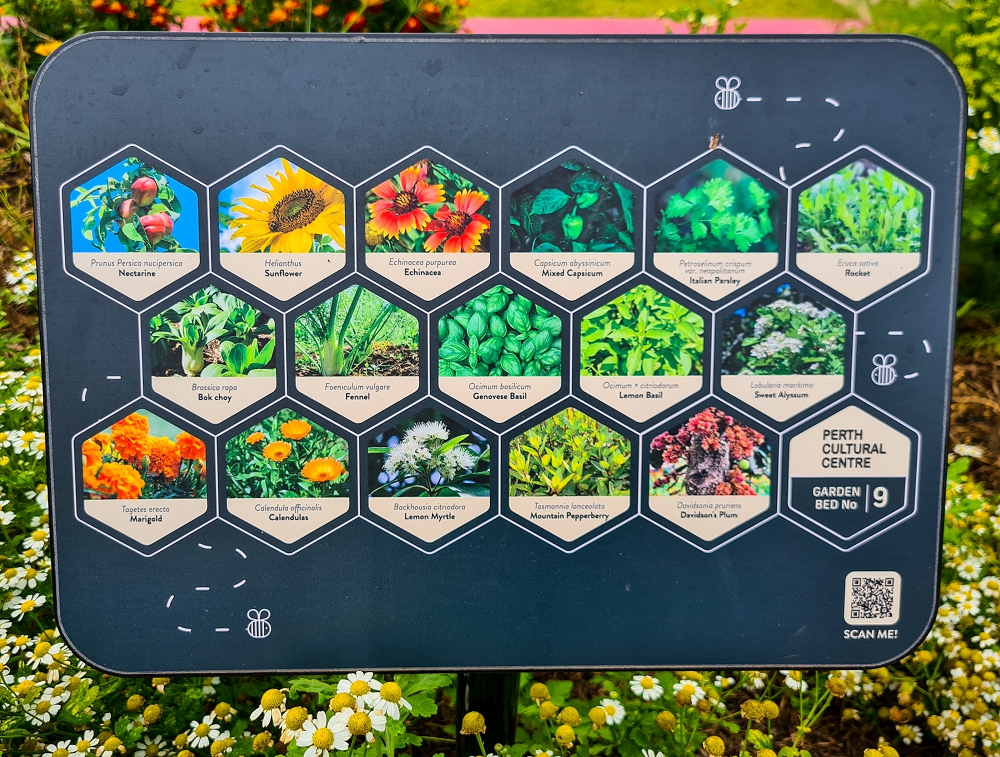
One of the most interesting things about bed 9 was the inclusion of native food plants, which is not generally a strong feature of the gardens.
Personalising flowers under the fruit trees in your garden
It’s fantastic to seek inspiration from this beautiful community garden. But it’s also really important to come up with your own plant list.
What flowers do you love? Which ones grow well in your climate? What herbs are you likely to use?
The garden at Perth Cultural Centre has obviously evolved over time. Some plants that are listed on the information boards are not evident in the garden. Likewise, there are plants in the garden that are not on the board.
And that sums up gardening, doesn’t it? There’s always so much trial and error. Good ideas don’t always come to fruition. Plants (and even fruit trees) sometimes die.
And plants have a mysterious way of turning up in your life, even if they don’t appear in your gardening plan!
Related Articles
Warming winter cakes with home-grown fruit
Bake delicious warming winter cakes from the fruit you’ve grown on the fruit trees in your own garden for extra satisfaction.
3 simple ways to improve your soil
Here are 3 simple ways to kickstart the health of your soil to help you grow fruit that is full of vitamins and minerals.
Saving heritage fruit trees by planting them
Many heritage fruit tree varieties are in danger of going extinct. The best way to save them is by planting them in your backyard.

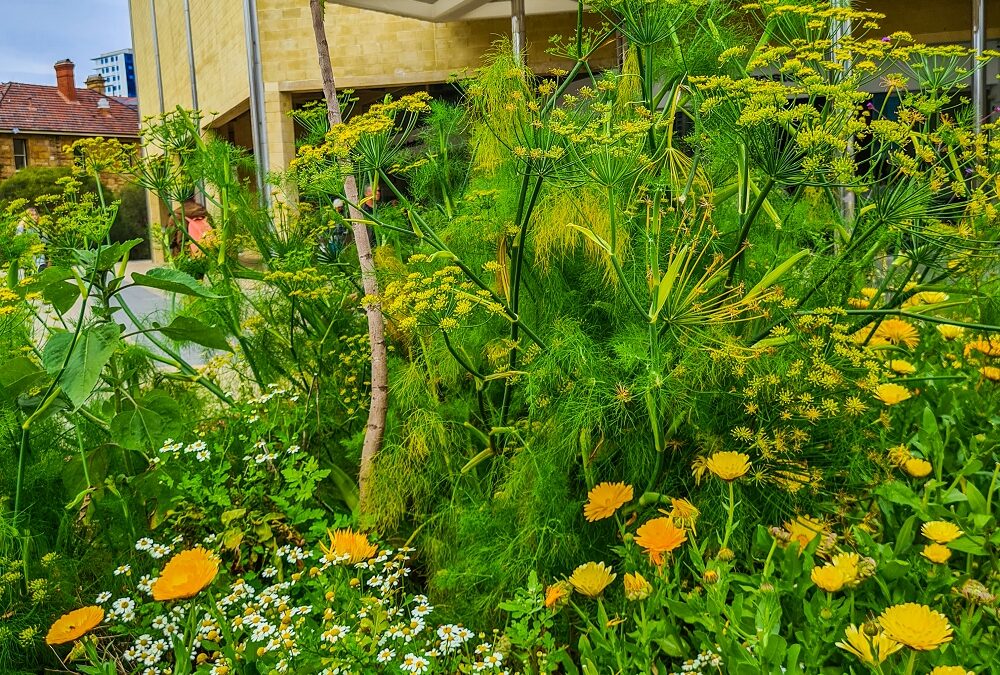

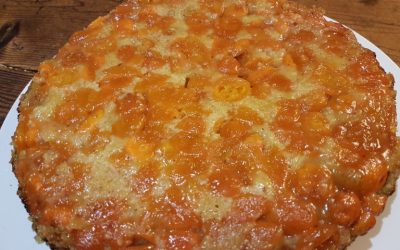

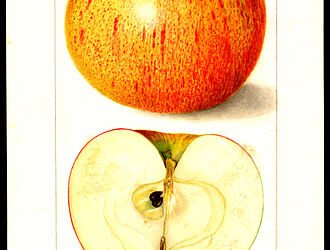


When growing a guild under trees that are sprayec with copper in the winter, and a cover spray of sulphur through the spring, what happens to the plants? Especially if they are edible greens? Will the plants be harmed and will the copper / sulphur wash off fully?
Hi Sarah, Copper sprays need to be used sparingly as they can lead to build up of copper in the soil, and that is harmful to our soil fungi. Wettabel sulphur is a much softer spray which does no damage. Both sprays wash off, but don’t spray if you know you are going to be picking fruit or vegies soon.